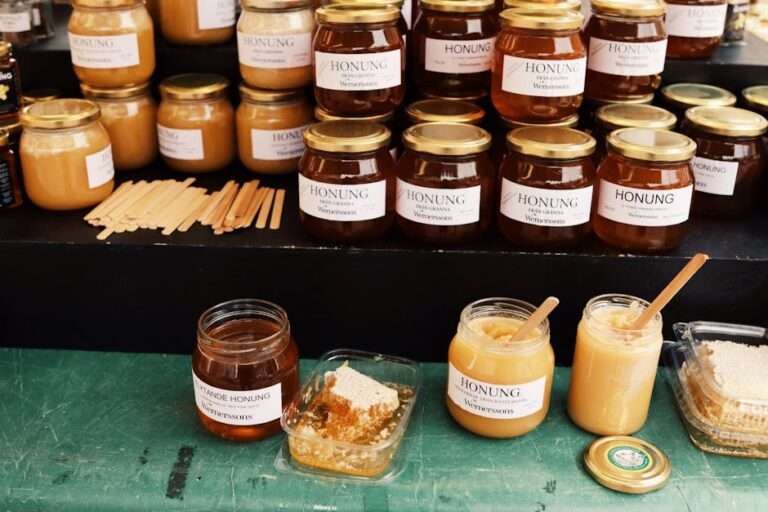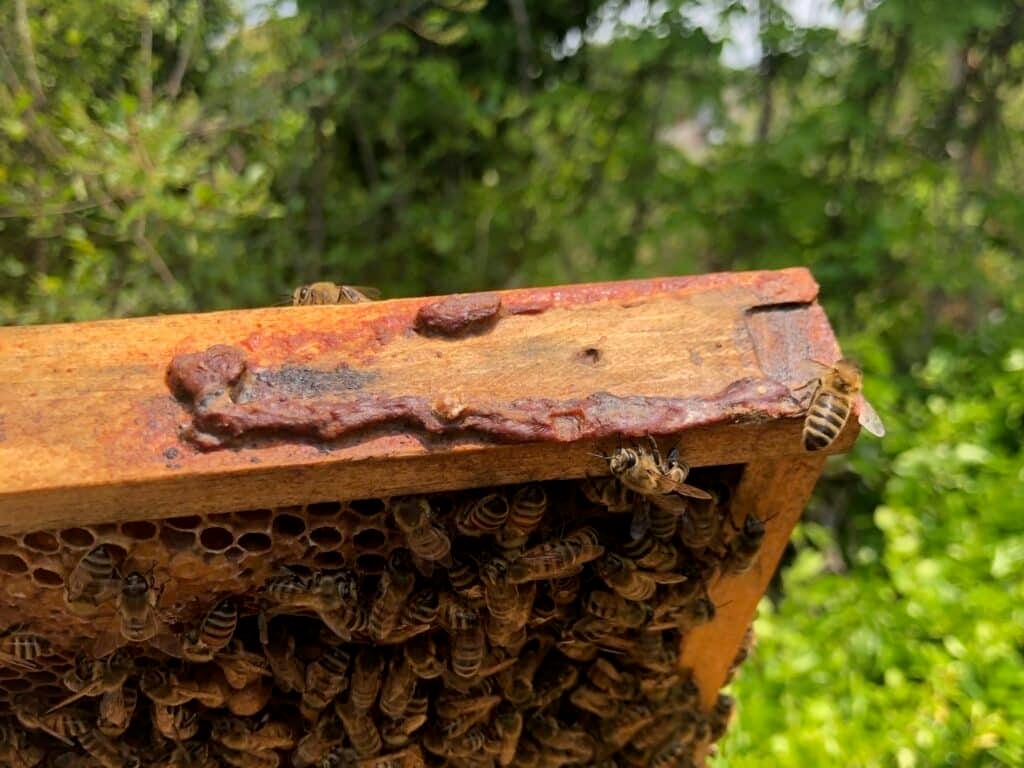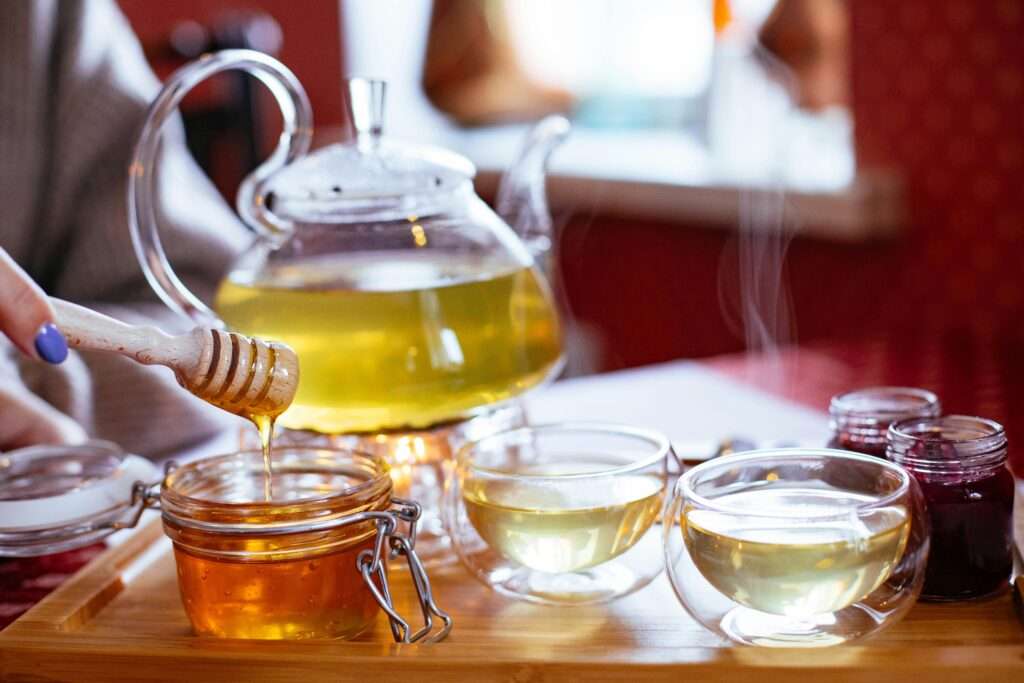Ever Wonder How Reliable Commercial Labels Like “Raw” and “Organic” Are For Honey Purity?
Commercial honey labels can be misleading when it comes to guaranteeing purity, with significant regulatory gaps and enforcement challenges undermining consumer confidence. While these labels provide some information about production methods, they offer limited assurance about authenticity or freedom from adulteration.
Honey Labeling Reliability
Federal regulations provide minimal protection against mislabeled honey products. The FDA requires only three basic elements on honey labels: the word “honey” as the common name, net weight, and contact information for the manufacturer or distributor[1][2][3][4]. These requirements focus on basic identification rather than quality assurance or purity verification.
Label accuracy varies significantly across different market segments. A concerning study found that DNA tests revealed more than 90% of honey from major UK retailers contained cheap fillers like sugar syrups, while all samples from local British beekeepers passed authenticity tests[5]. This suggests that direct sourcing from known producers provides better assurance than commercial retail labeling.
The FDA’s enforcement capabilities remain limited, with the agency acknowledging that honey is “a product that can be at risk of fraud”[5]. Recent FDA testing of imported honey found 3% of samples violated authenticity standards in 2022-2023, down from 10% in 2021-2022, though these assignments weren’t designed for statistical comparison[6][7].
“Raw” Honey Labels
“Raw” honey lacks standardized regulatory definition in the United States, allowing producers considerable flexibility in applying this label[8][9][10]. The term generally suggests minimal processing, with honey that hasn’t been heated above natural hive temperatures or extensively filtered[11][8][9].
However, no federal oversight ensures “raw” honey meets specific criteria. The National Honey Board notes that while “raw” suggests less processing, it doesn’t guarantee the honey’s authenticity or freedom from adulteration[12]. Producers can legally label honey as “raw” without meeting standardized requirements for processing methods or quality standards.
Ultra-filtration poses particular concerns for “raw” honey claims. Some honey marketed as “raw” may still undergo filtration processes that remove pollen and other natural components, potentially contradicting consumer expectations about minimal processing[10][13]. The FDA’s guidance allows significant processing while still permitting “raw” labeling claims.
“Organic” Honey Certification Challenges
The USDA cannot certify domestic honey as organic due to the absence of established standards for honey production[14][15][10]. As of 2025, the USDA’s National Organic Program has not adopted specific standards for honey, despite recommendations from the National Organic Standards Board dating back to 2010[14][15][16].
All USDA Organic honey sold in the United States is imported and certified by foreign countries whose organic standards the USDA recognizes[14][10]. This creates significant quality control concerns, as the USDA relies on other nations’ certification processes rather than applying domestic oversight[10].
Practical impossibility of organic honey production in most US locations undermines label reliability. Bees forage within a radius of 3-5 miles from their hives, covering 28-78 square miles of potential foraging area[10]. Ensuring all plants within this area remain free from synthetic pesticides, fertilizers, and genetic modification proves virtually impossible in most agricultural regions[17][15][10].
Small-scale exception allows misleading labels. The USDA permits producers selling less than $5,000 annually in organic products to use organic labeling without official certification[10]. While these producers must follow organic requirements, enforcement remains minimal, potentially allowing inaccurate organic claims[10].
European Union organic standards prove more stringent, requiring hives to be located within “organic zones” where nectar sources are primarily organic or wild[17][15]. However, even these standards cannot guarantee exclusive foraging on organic plants, raising questions about true organic purity[15].
Fraud and Adulteration Concerns
Sophisticated adulteration methods evade detection behind seemingly legitimate labels. Modern honey fraud involves sugar syrups specifically designed to mimic honey’s chemical composition and pass standard authentication tests[18][19][13][20]. The European Commission found 46% of imported honey samples showed signs of adulteration, significantly higher than previous studies using less sensitive detection methods[19][20].
Advanced testing reveals widespread problems. DNA testing commissioned by the Honey Authenticity Network found over 90% of major retailer honey contained cheap fillers, while samples from local beekeepers remained authentic[5]. This suggests that commercial distribution chains present greater fraud risks than direct producer sales.
Economic incentives drive adulteration. With genuine honey costing approximately $3,000 per tonne compared to $500 per tonne for substitute syrups, the profit margins for fraudulent products remain substantial[5][13]. Modern adulterators use rice, wheat, and sugar beet syrups that prove much harder to detect than traditional corn syrup adulterants[19][13].
Current testing methods prove inadequate for sophisticated fraud detection. Traditional home tests like water dissolution, flame tests, and crystallization checks cannot detect modern adulterants specifically designed to pass these simple assessments[21][22][23][24]. Even laboratory testing struggles with advanced synthetic syrups that require nuclear magnetic resonance spectroscopy for identification[21][25].
Certification Programs and Alternatives
Third-party certification programs offer potentially better assurance than basic labeling requirements. Programs like True Source Certified provide supply chain verification and testing protocols beyond standard regulatory requirements[17][13]. These voluntary programs implement more rigorous authentication methods than basic label compliance.
Direct sourcing provides the highest reliability. Purchasing honey directly from known beekeepers or through farmers’ markets typically offers better authenticity assurance than commercial retail channels[10][13][23]. Local producers can provide transparency about their production methods, hive locations, and processing practices that commercial distributors cannot match.
Professional testing methods continue advancing to combat sophisticated fraud. New techniques including Spatial Offset Raman Spectroscopy (SORS) can detect adulterants without opening containers, while DNA barcoding can identify as little as 1% adulteration[18][26][27]. However, these advanced methods remain inaccessible to most consumers and many smaller regulatory agencies.
Recommendations for Consumers
Label skepticism proves justified given current regulatory limitations and widespread fraud. Commercial labels like “raw” and “organic” provide limited reliability for honey purity, with significant gaps in oversight and enforcement allowing misleading claims.
Multiple verification methods work better than relying on single labels or tests. Combining careful sourcing from trusted producers, sensory evaluation, and understanding of natural honey characteristics provides better protection than depending solely on commercial labeling[23].
Building relationships with local beekeepers offers the most reliable path to authentic honey. Direct producer relationships allow verification of production methods, hive management practices, and harvesting techniques that commercial labels cannot guarantee[13][23].
The current honey labeling system fails to provide adequate consumer protection against fraud and adulteration. While regulatory improvements and advanced testing methods continue developing, consumers must rely on careful sourcing and producer relationships rather than commercial labels for honey authenticity assurance.
⁂
- https://us.honeystickers.com/pages/honey-label-regulations-fda
- https://leasehoney.com/2020/12/29/sticking-to-the-standards-federal-honey-labeling-requirements/
- https://ctmlabelingsystems.com/a-complete-guide-to-honey-label-requirements/
- https://www.fda.gov/regulatory-information/search-fda-guidance-documents/guidance-industry-proper-labeling-honey-and-honey-products
- https://www.independent.co.uk/life-style/food-and-drink/features/fake-honey-brands-safe-how-to-spot-b2646976.html
- https://www.fda.gov/food/economically-motivated-adulteration-food-fraud/fy2223-sample-collection-and-analysis-imported-honey-economically-motivated-adulteration
- https://www.fda.gov/food/hfp-constituent-updates/fda-releases-report-economically-motivated-adulteration-honey
- https://brightland.co/blogs/field-notes/raw-honey-vs-pure-honey
- https://bigislandbees.com/blogs/bee-blog/raw-vs-pure-vs-organic-vs-unfiltered-how-to-read-honey-labels
- https://www.foxhoundbeecompany.com/blogs/honey/the-truth-about-organic-honey
- https://simplyhoney.com.au/what-is-raw-honey/
- https://honey.com/honey-industry/resources/honey-labeling
- https://nettiesbees.com/post/the-true-cost-of-cheap-honey-understanding-honey-fraud
- https://brookfieldfarmhoney.wordpress.com/2012/01/03/usda-organic-honey-what-does-it-mean/
- https://agairupdate.com/2025/02/05/debunking-the-myth-of-organic-honey-why-true-organic-honey-doesnt-exist/
- https://www.ams.usda.gov/sites/default/files/media/NOP Livestock Final Rec Apiculture.pdf
- https://katesrealfood.com/blogs/blog/organic-honey-an-ultimate-guide
- https://www.technologynetworks.com/applied-sciences/articles/fake-honey-is-everywhere-and-these-tests-can-prove-it-391564
- https://joint-research-centre.ec.europa.eu/jrc-news-and-updates/food-fraud-how-genuine-your-honey-2023-03-23_en
- https://theweek.com/culture-life/food-drink/the-sticky-issue-of-honey-fraud
- https://www.reddit.com/r/Beekeeping/comments/15vd3c2/honey_purity_test/
- https://www.youtube.com/watch?v=aey2vyV3vWc
- https://www.smileyhoney.com/blogs/honey-school/how-to-spot-fake-honey
- https://honey.com/images/files/NHB-Test-Myths.pdf
- https://pmc.ncbi.nlm.nih.gov/articles/PMC8825849/
- https://www.cranfield.ac.uk/press/news-2024/the-bees-knees-new-tests-created-to-find-fake-honey
- https://nationalpost.com/life/food/honey-fraud



